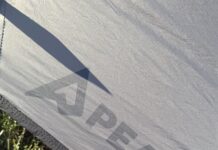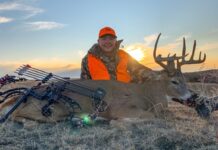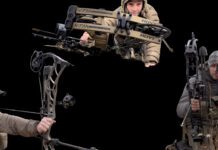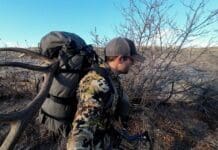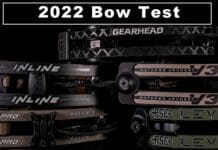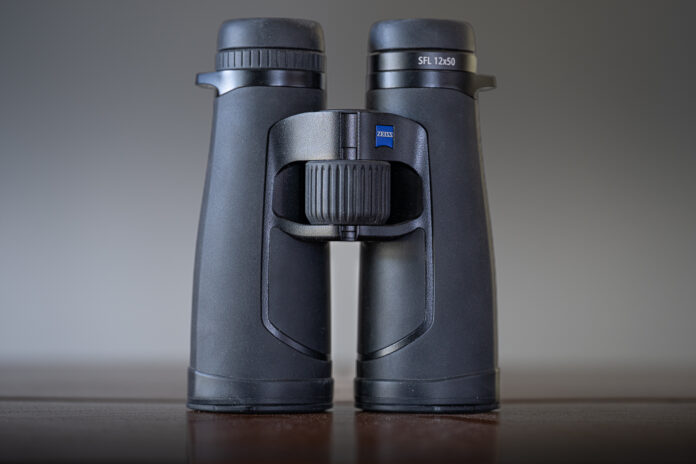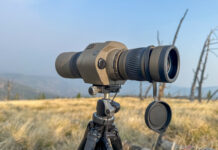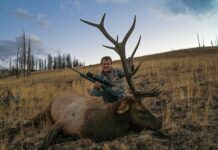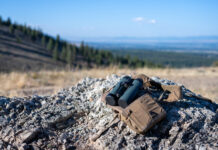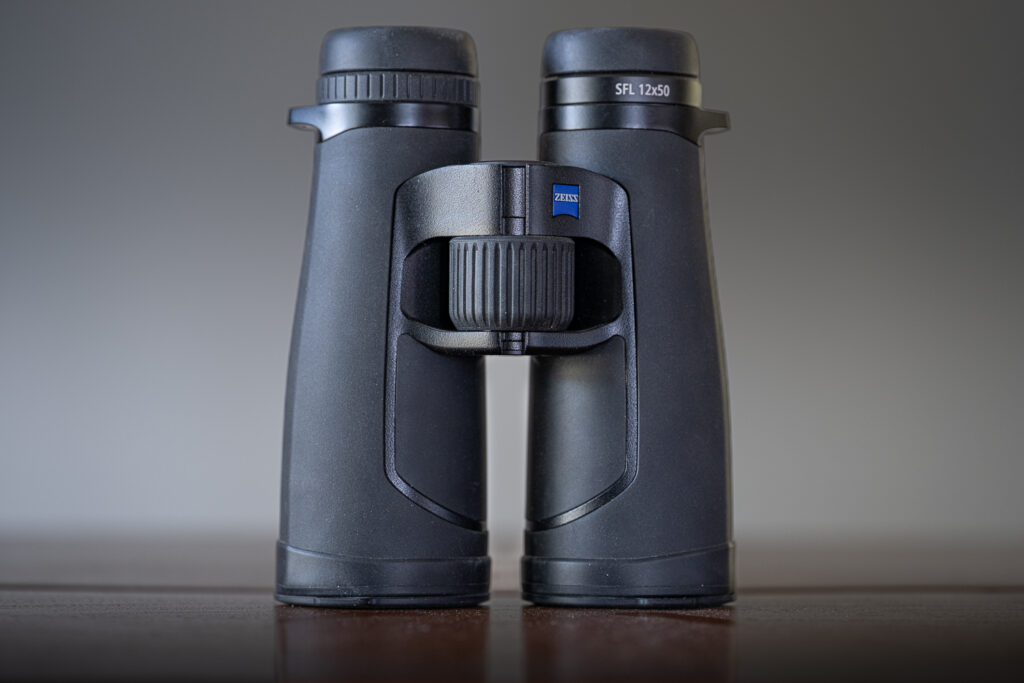
Zeiss is no stranger to Western hunters or Rokslide readers. The German optics giant offers a comprehensive line of sports optics, including binoculars, spotting scopes, rangefinders, and riflescopes. In the roof prism binocular segment, the flagship Victory line sits at the top, with the SFL next in line, Conquest HDX after that, and the Terra line fills the entry-level role.
The SFL lineup is marketed as a top-shelf competitor to flagships, but with significant savings in price and bulk. Initially offered in 40mm and 30mm objective models with 8x and 10x magnifications, the SFL line expanded with the introduction of 50mm models in 8x, 10x, and 12x magnifications. This review focuses on the exciting 12×50 model.
The 12x magnification is the headline feature here, as Western hunters have shown a propensity for higher magnifications lately. This isn’t surprising in the wide open spaces of the American West. 12s have become increasingly popular since Coues deer and mule deer hunters went googly-eyed for Swarovski’s ultra-premium 12X50 EL. Since then, more 12x options have hit the market and hunters are eating them up.
The kicker for the SFL is that it offers 12x magnification and a generous 50mm objective in a surprisingly compact form factor.
So let’s dive in:
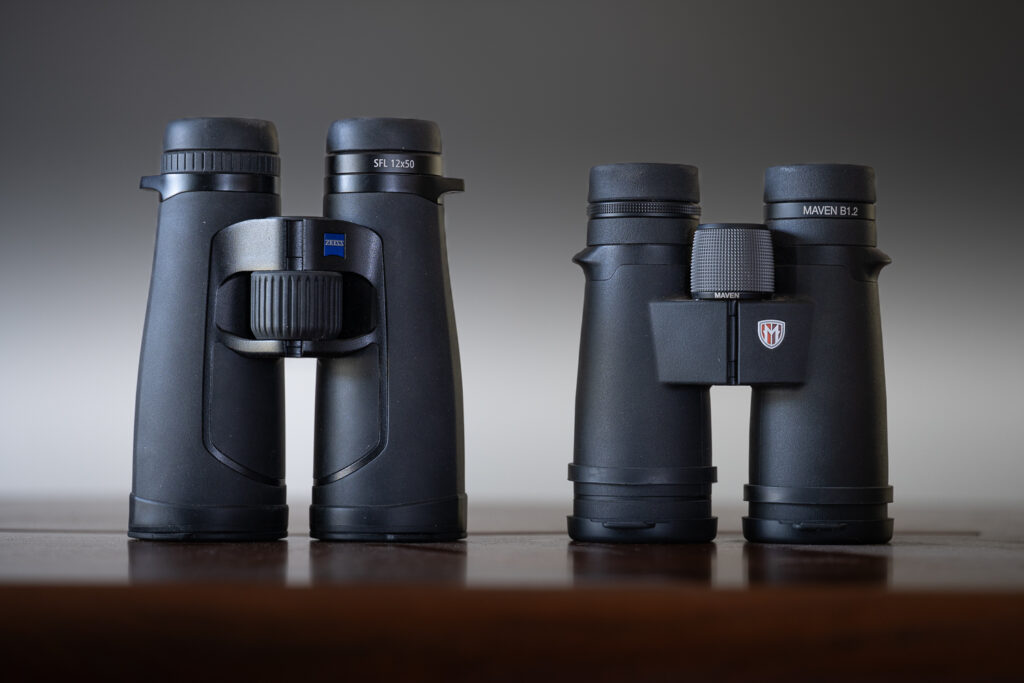
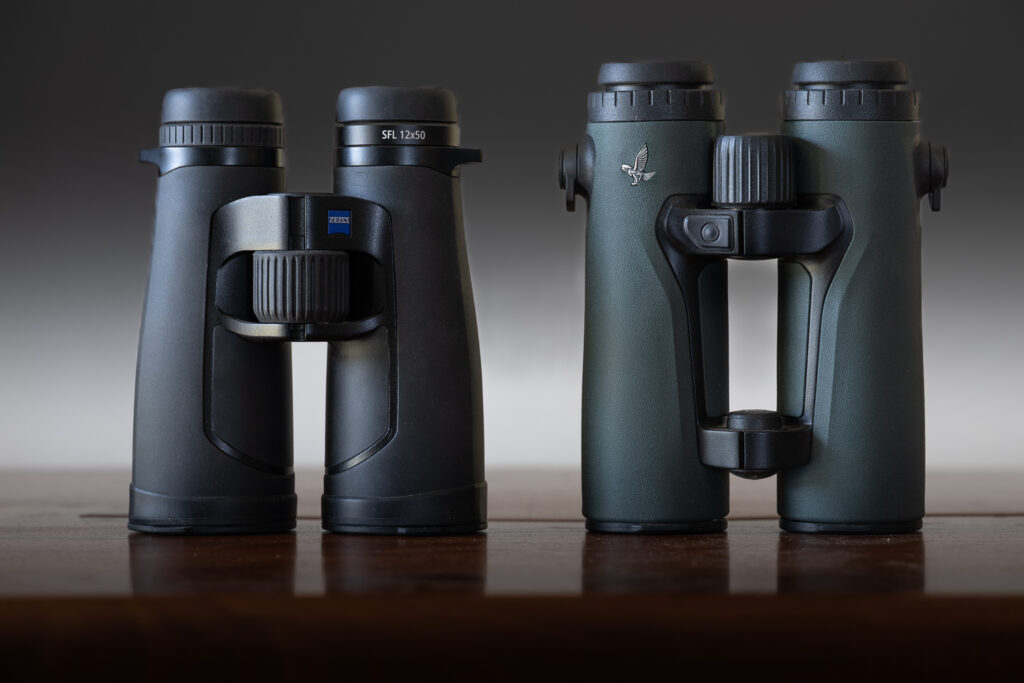
Features
Even at their sub-$2000 price point, the SFLs are intended to compete at the top of the market. The goody list is extensive, featuring field-flattened eyepieces, easy tripod adaptation, full rubber armor, removable eyecups, a durable build, and “Lotutec” hydro/oleophobic coatings.
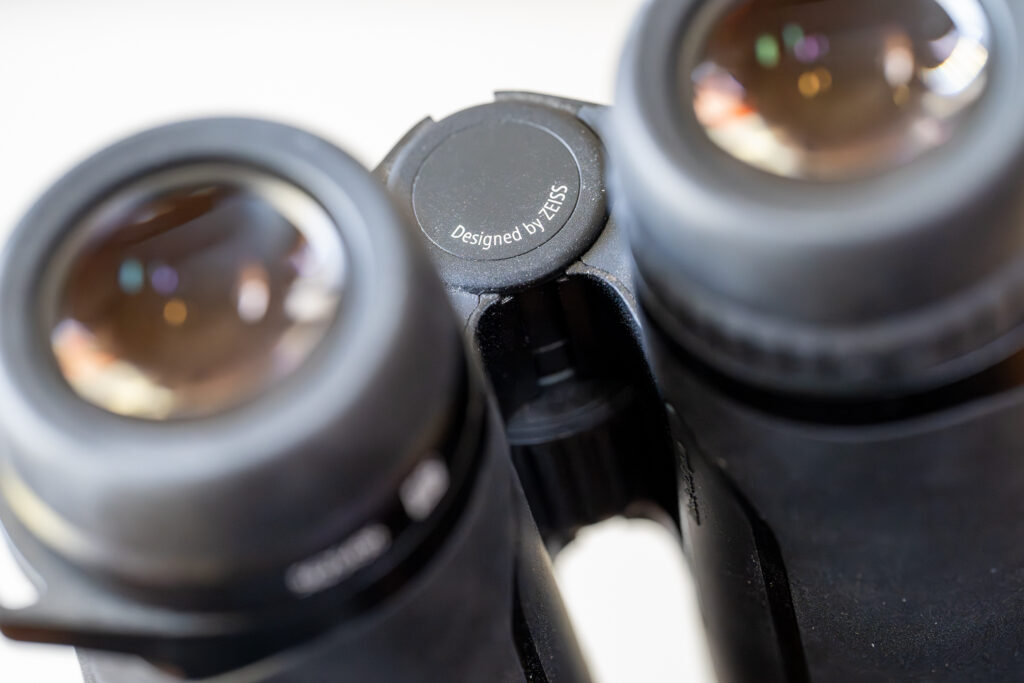
The specs are impressive
- Height: 6.3 inches
- Weight: 30.8 ounces
- FOV: 315 ft at 1000 yards.
- Eye relief: 18 mm
- Price: $1999
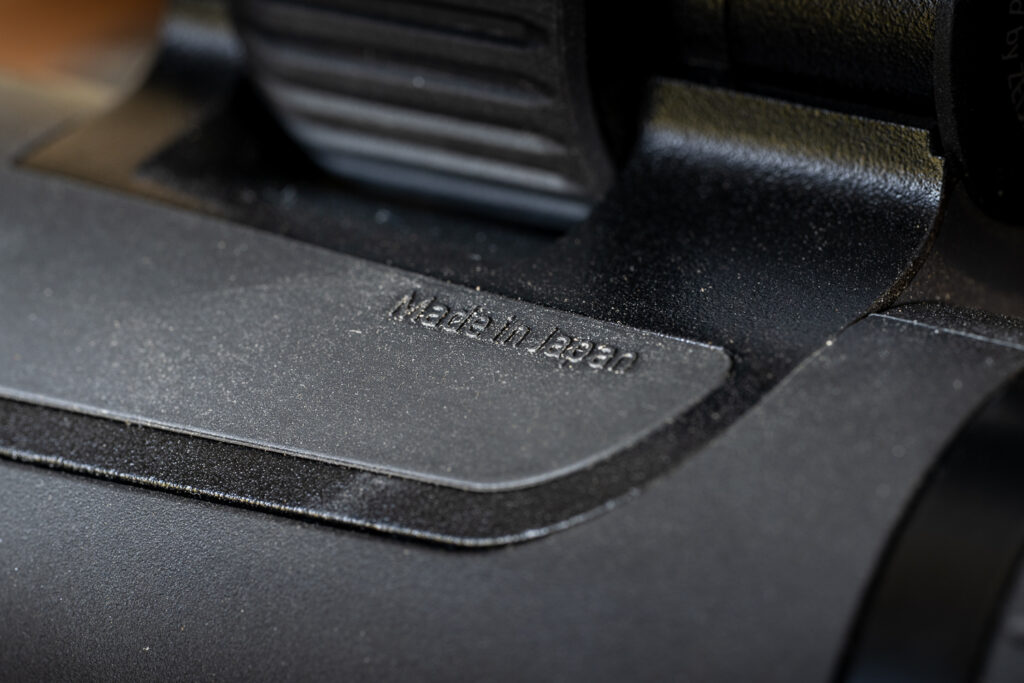
Build Quality
Like the mid-range HDX, the SFL features “designed by ZEISS” printed on the top bridge, while “Made in Japan” is discreetly embossed on the armor beneath the hinge. The fit and finish are excellent, providing a premium feel. Strangely, the diopter adjustment is not locking, even though the lower HDX line has the feature. The removable eyecups are made of quality plastic with smooth, contoured rubber cups. The five positions have a firm detent and hold well.
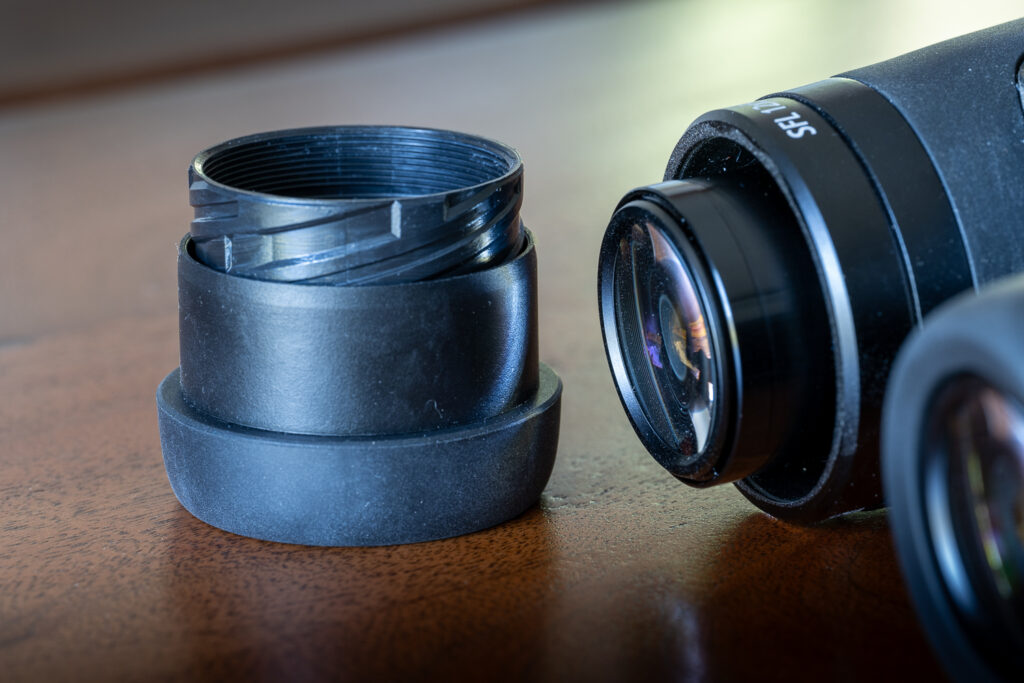
The objective barrels are asymmetrical, keeping with design cues from the other binocular lines, and have matching tethered covers. A 1/4-20 threaded standard tripod exit is hidden in the bottom hinge.

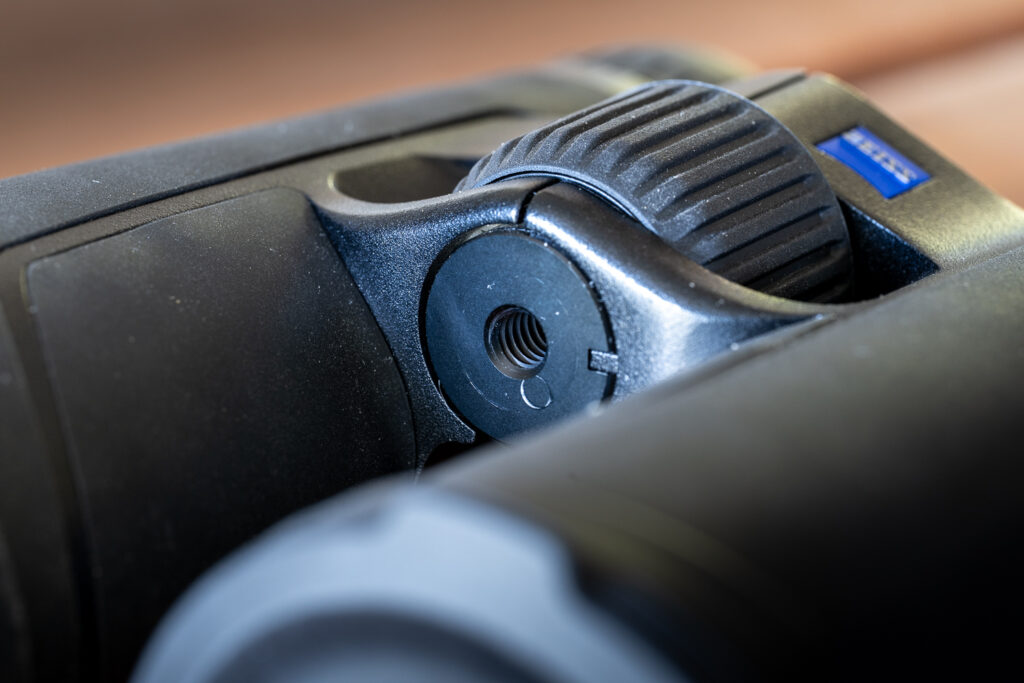
1.4 turns of the focus wheel provides a full range from close focus to infinity focus. The rubber armor is of Zeiss’ grippy-when-wet variety. The center focus wheel is nestled between the two close hinges and provides a lightly damped and smooth feel.
The 18mm eye relief was sufficient to get a full field of view with glasses, and I generally used the 4th detent position without glasses.
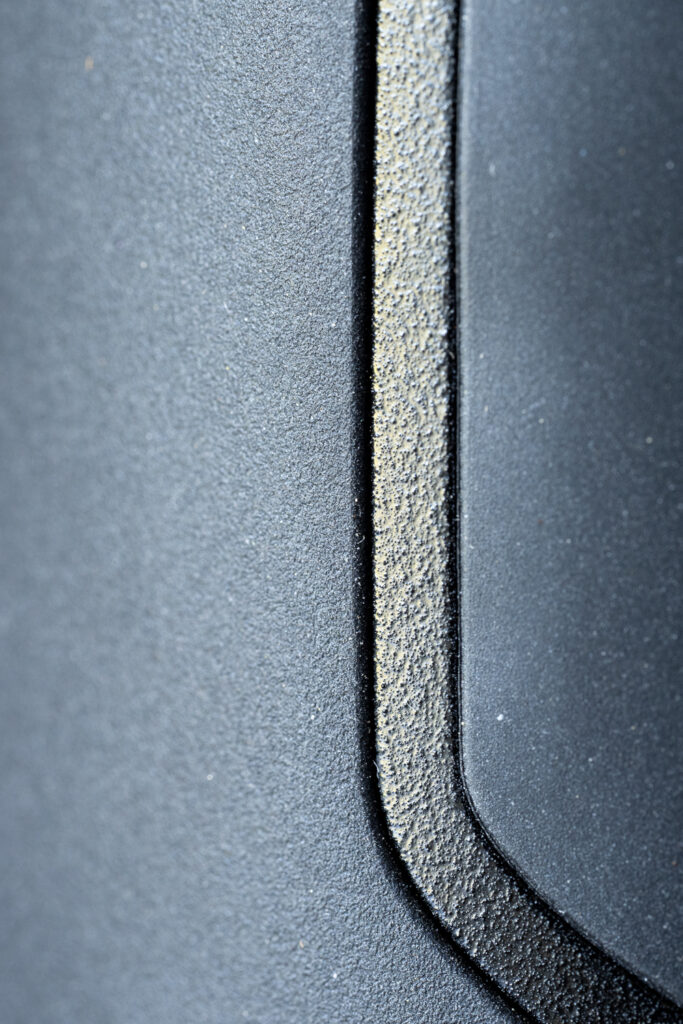
Optical Performance
I was particularly interested in seeing the optical performance of the SFL, given its short stature and lighter weight. Zeiss says they made weight by using “reduced lens diameters, thinner lenses, and … reduced spacing between lens elements.”
The field of view at 315 feet/ 1000 yards gains 15 feet over the 12X50 EL, although it is 24 feet short of the newer 12×42 NL. I think the SFL FOV is pretty impressive. I remember when 10x42s that had that kind of FOV were considered “wide angle.”
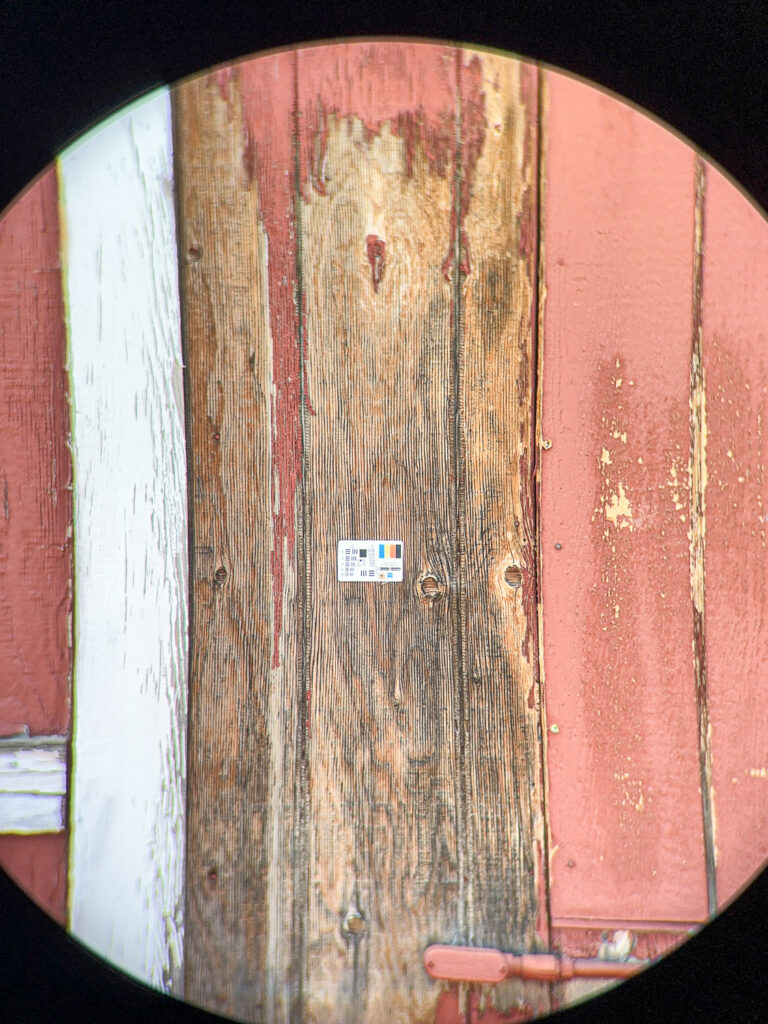
Centerfield resolution performance is great, and I was able to resolve tiny elements on the test chart. At close range, there was some field curvature that hindered measuring edge sharpness at close distances, although at normal viewing distances the edges were suitably sharp.
Zeiss binoculars have traditionally been designed for excellent low-light performance, and in this area, the SFL excels. The 4.2mm exit pupil is identical to the Maven 10X42 1.2B I used for low-light comparison. The Maven is really good in this area, but the SFL had little problem keeping up, and the additional magnification provided greater detail under similar brightness.
Contrast was very good, and in line with a binocular at this price point, if still behind the class-leading flagships.
Chromatic Aberration
Color fringing from chromatic aberration is a challenge for any binocular, but becomes more pronounced at higher magnifications, in my experience. The SFL does pretty well here, but there is a hint of fringing even in the center.
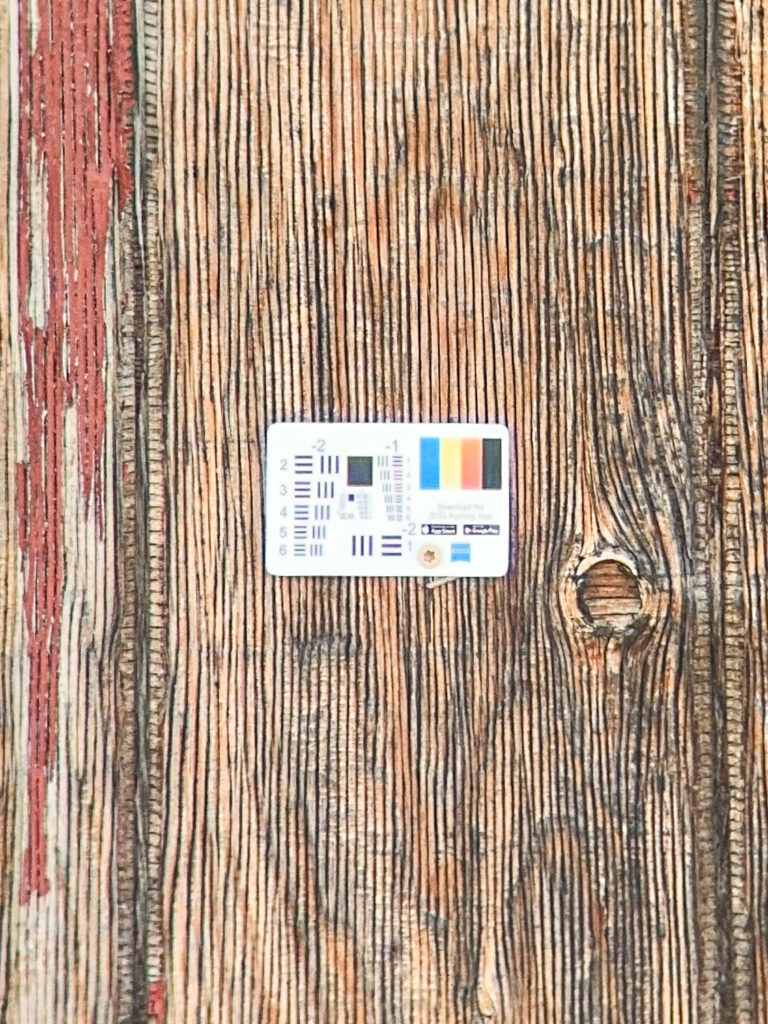
Moving towards the edge, fringing becomes increasingly visible. I noticed fringing on high contrast subjects quite often, although the view is otherwise detailed and maintains good contrast.
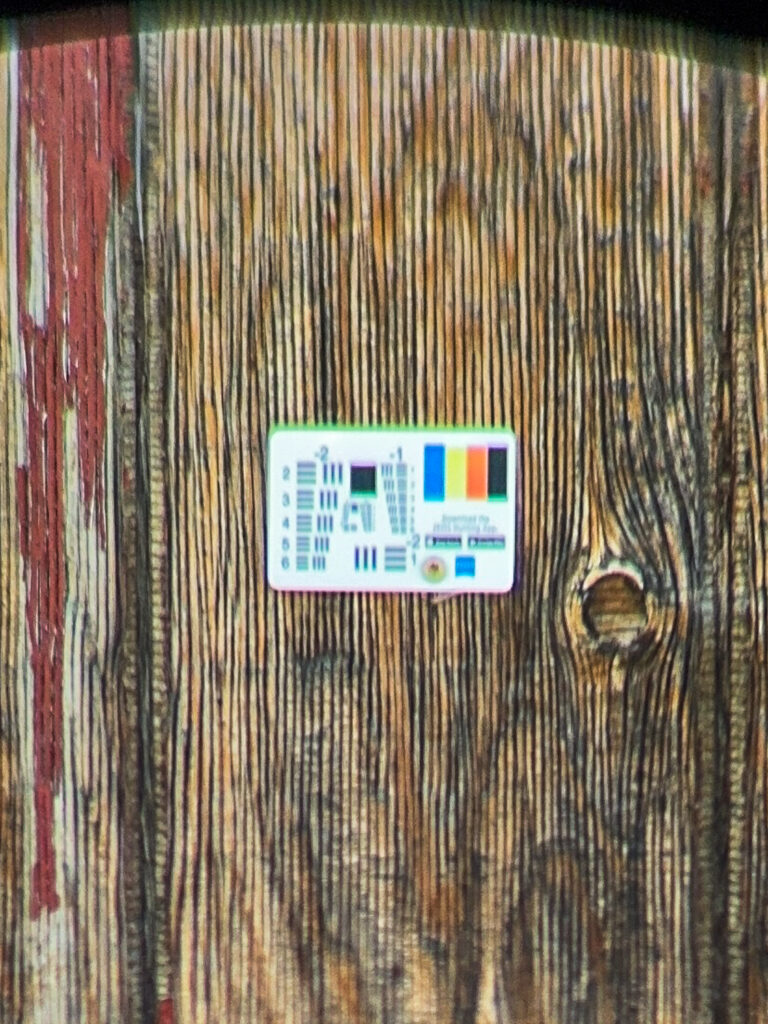
Distortion
Wide-field high-magnification binoculars often suffer from significant distortion, but the SFL does quite well here. The distortion is a complex “mustache” style distortion, but it was only really noticeable when I looked for it against my patterned garage door.
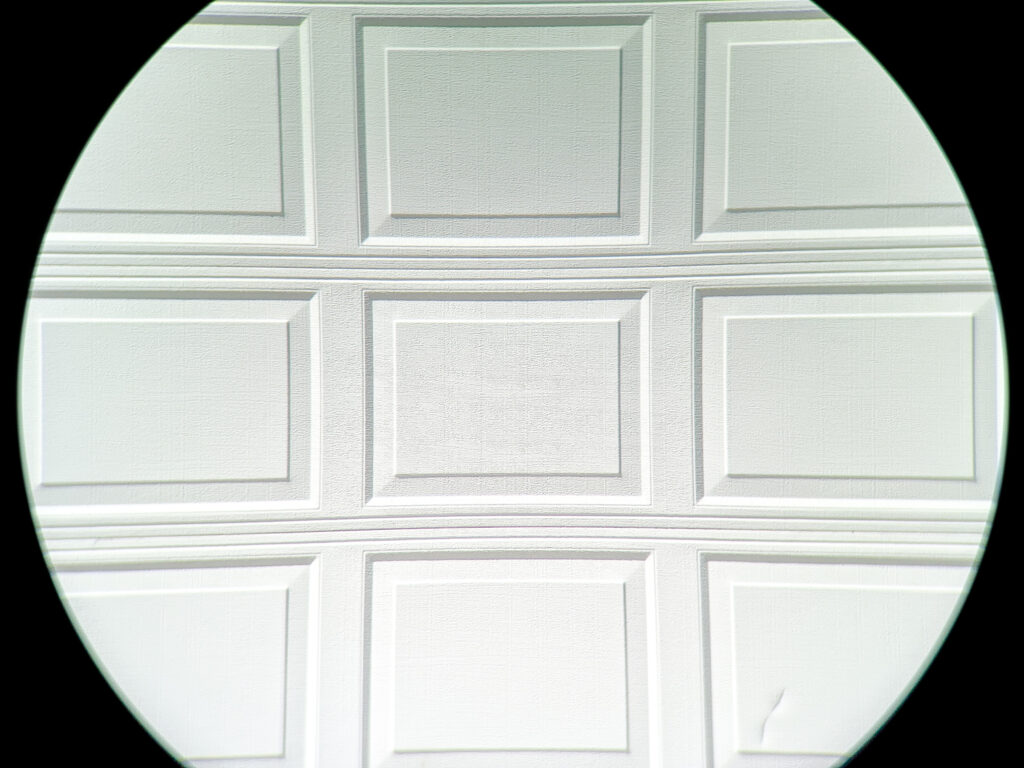
Field Performance
I used the Zeiss SFL for scouting, hiking, backpacking, traveling, and birdwatching. I kept an eye on a bald eagle nest near Flathead lake for several weekends, and they did a good job of cutting the distance so I could observe the eagle pair without annoying them.
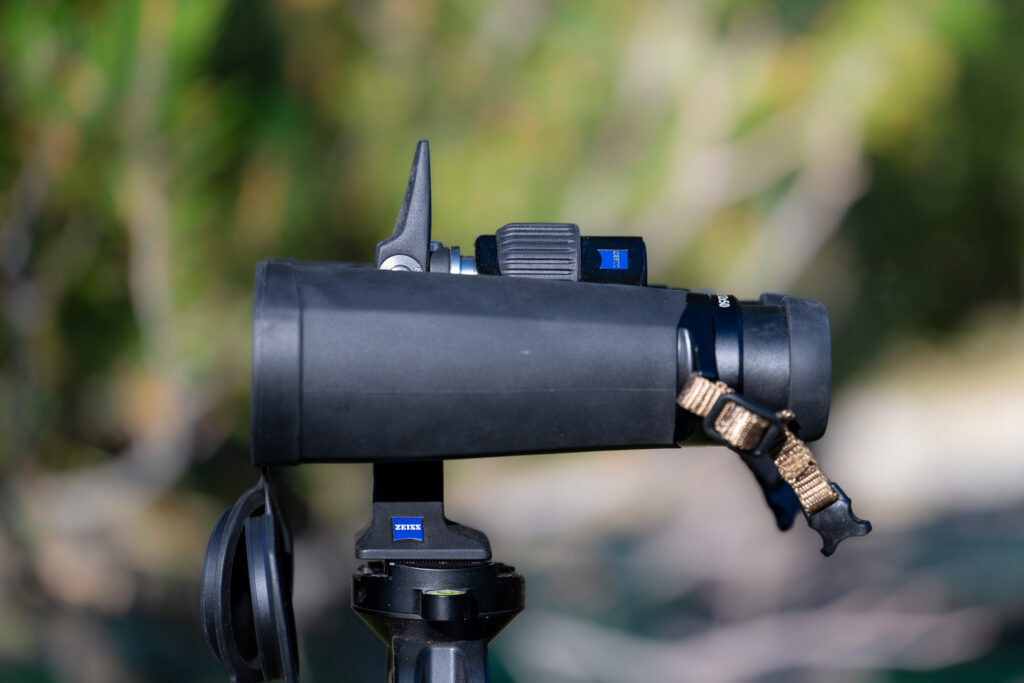
Generally, they seemed more like a 10×42 than a 12×50 with their compact form factor and relatively light weight. I did notice it took a deliberate effort to keep the view steady at the higher 12x magnification. I switched to a 10x several times, and it was much easier for me to keep the 10x steady. However, once they were on the tripod, there were essentially no downsides to the 12x, given the wide FOV.
Overall in the field, I preferred the more compact form of the SFL to other larger 12×50 binoculars I have used.

Warranty
Warranty is an essential part of the purchase decision for Western hunters. Zeiss backs the SFLs with a very good lifetime warranty on materials and workmanship, and further backs that up with a 5-year “No-Fault” warranty.
Tripod Adapter
Anyone considering a 12x binocular should just factor in the cost of a tripod adapter. While 12x is certainly usable handheld, it is just amazing when stabilized on a tripod. The SFL does have a standard 1/4-20 threaded exit in the bridge, so any number of adapters can be used, but Zeiss sent their proprietary 1/4” Tripod Adapter ($129) with the SFL. This is a stud-and-post style adapter where the hex-keyed stud screws into the 1/4”-20 socket and then can be inserted into the post adapter itself. A large lever on the post secures the binoculars firmly, while a push-button prevents accidental release. This resulted in a sleek, OEM solution. One issue, however, was that the adapter base wasn’t sized to be Arca-Swiss compatible, so an adapter plate will be needed for your tripod head.
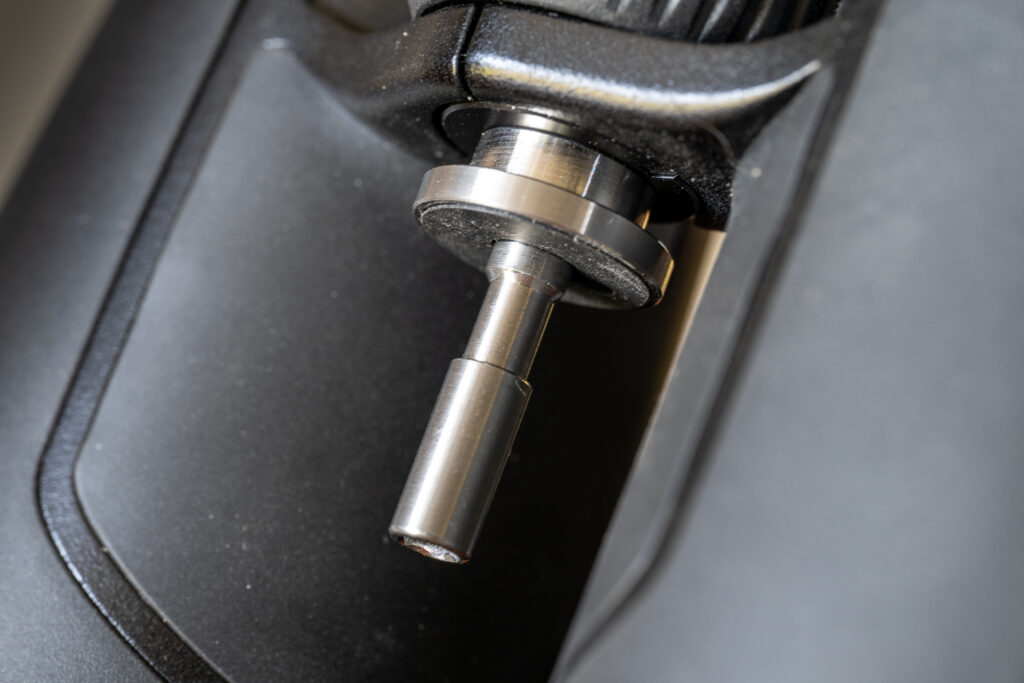
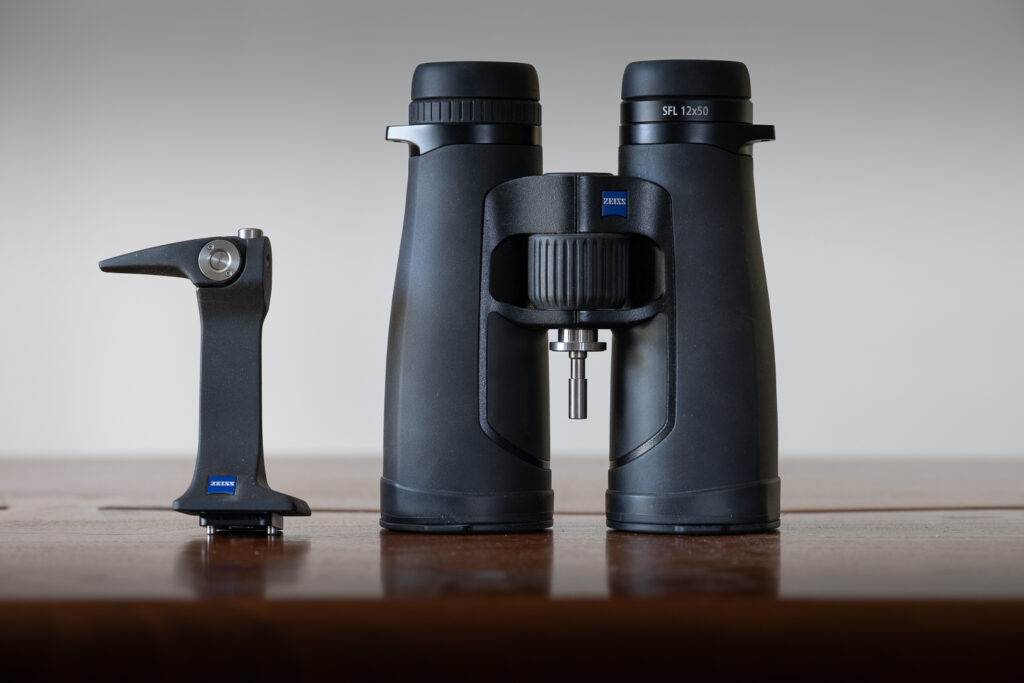
Conclusion
Zeiss set out to make the most compact, high-performance 12×50 binocular available and did a pretty good job. Most hunters would be hard-pressed to tell the difference between the average 10X42 binoculars in terms of size and weight. Many 10×42 users moving to this 12X50 won’t even have to change their binocular harness. The optics are very good for the price point, although larger, more expensive flagship offerings will have a little better aberration control. Hunters with a steady hand, or those who do their binocular glassing from a tripod, will find the SFL 12X50 a compact and ready companion for their western hunt.
Comment or ask Matt questions here.

